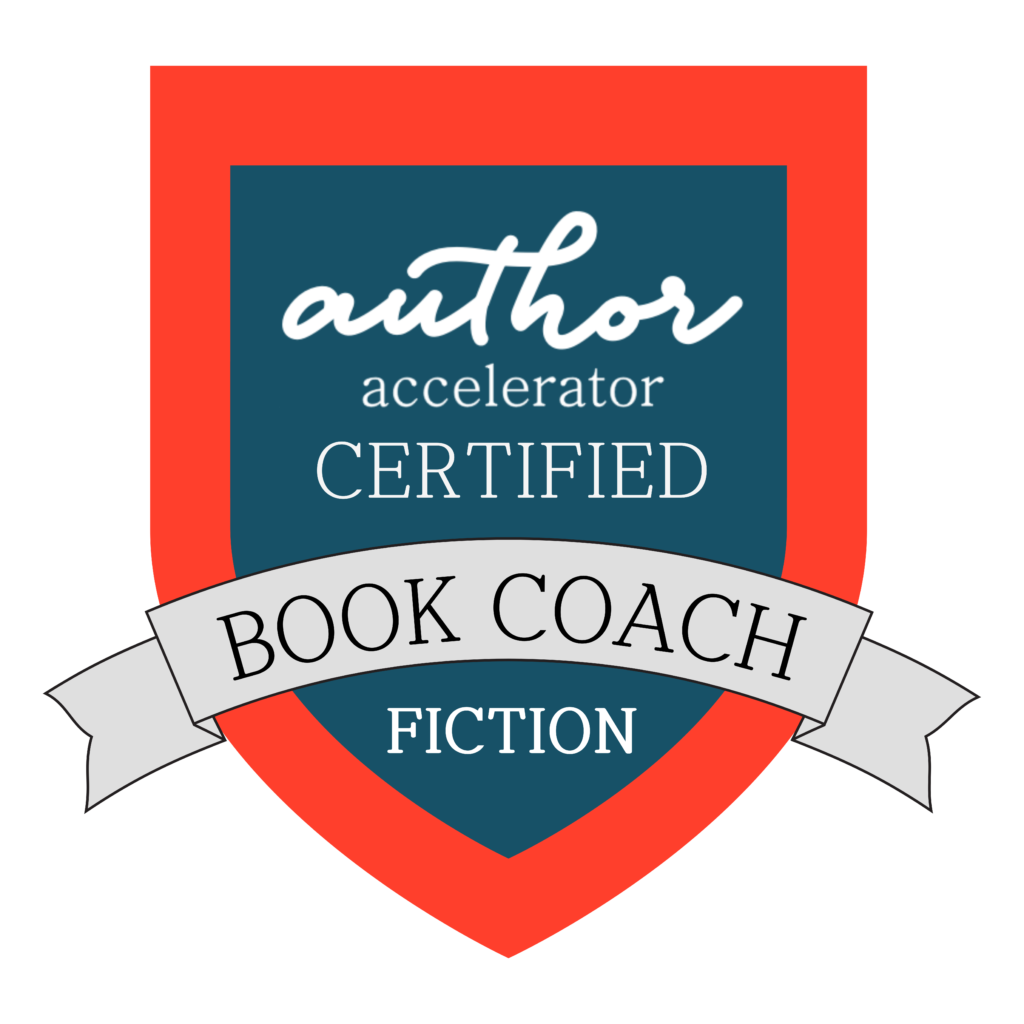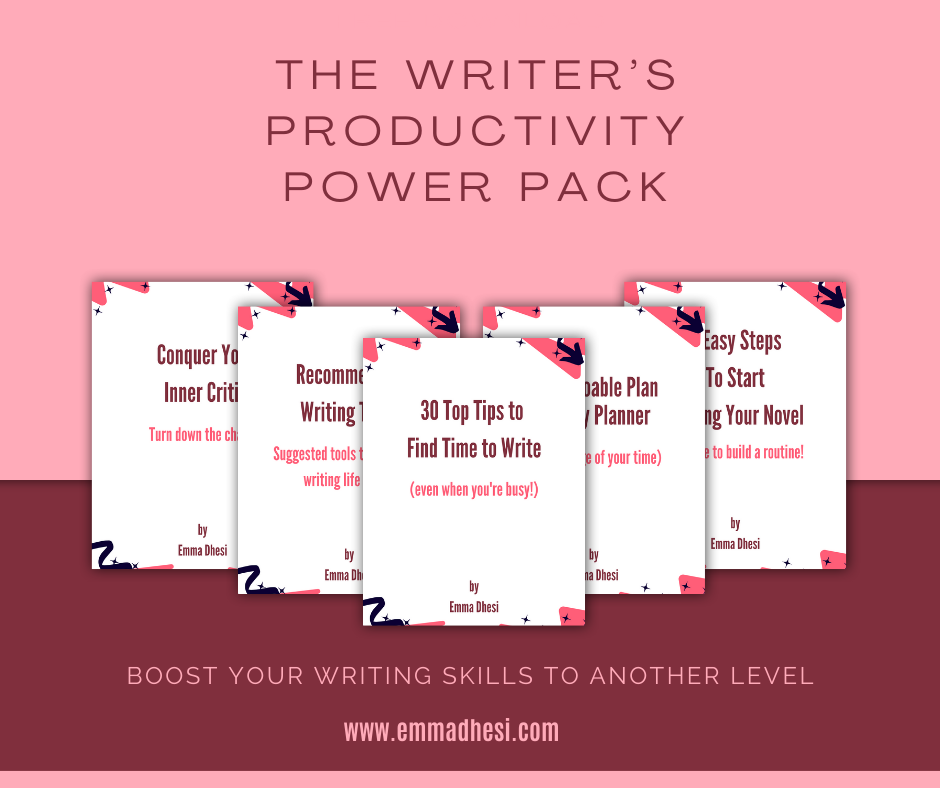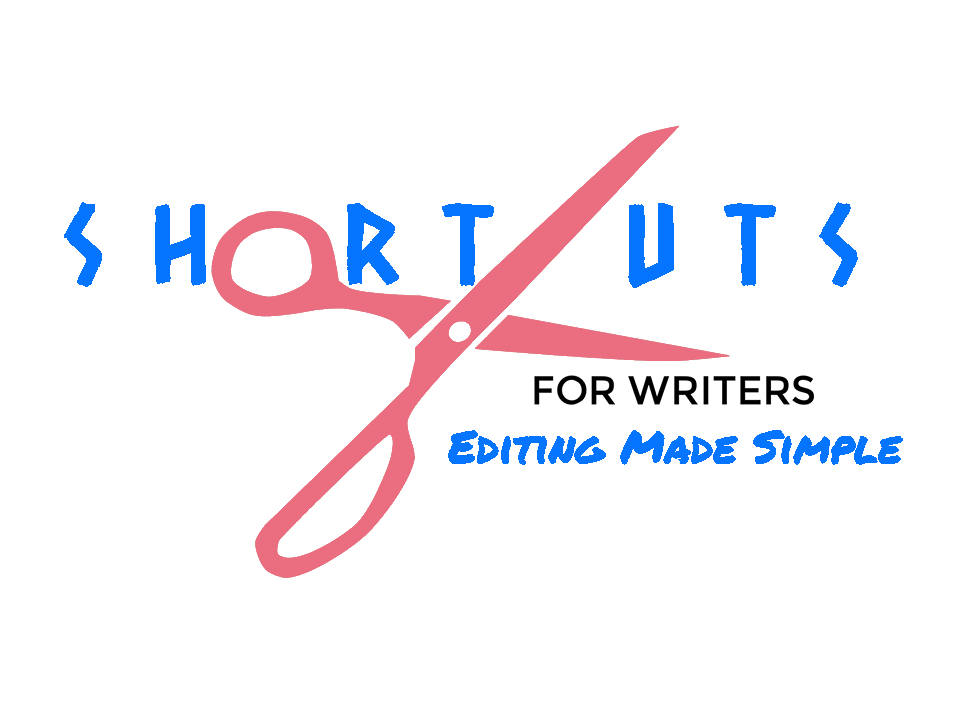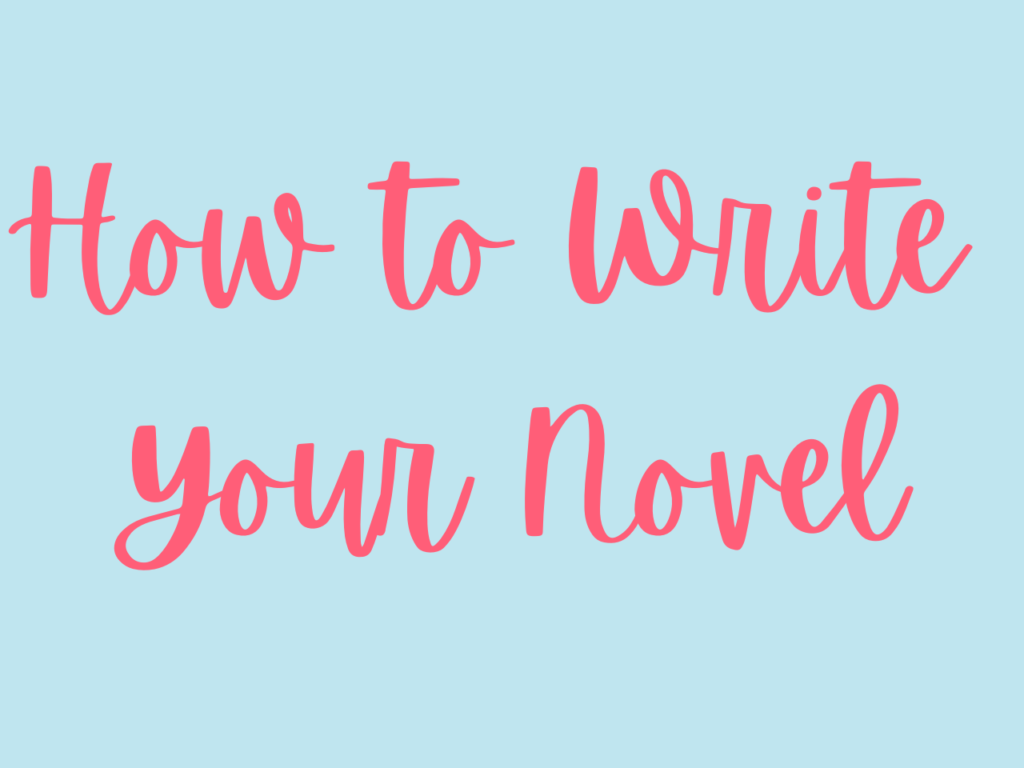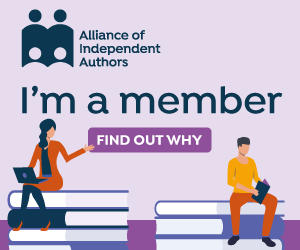The Structure of Story with Ross Hartmann
Interview with Ross Hartmann
Emma Dhesi 00:00
Hello, I’m Emma Dhesi and welcome to another episode of turning readers into writers. If you’re brand new here, welcome. And here’s what you need to know. This is a community that believes you are never too old to write your first novel, no matter what you’ve been up to until now, if you’re ready to write your book, I’m ready to help you reach the end, I focus on helping you find the time and confidence to begin your writing journey, as well as the craft and skills you need to finish the book.
Each week I interview debut authors, editors and industry experts to keep you motivated, inspired, and educated on all things writing, editing, and publishing. If you want to catch up, head on over to emmadhesi.com, where you’ll find a wealth of information and tools to help you get started. Before we dive in. This week’s episode is brought to you by my free cheat sheet 30 Top Tips to find time to write.
In this guide, I give you 30 ways that you can find time to write in the small gaps that appear between the various errands and tasks and responsibilities that you have in your day to day life. Now, you might be thinking that you don’t have any time to spare, but I can guarantee these top tips will give you writing time you didn’t think you had.
If you thought writing always involved a pen and paper or a keyboard. Think again. If you thought you needed at least an hour at a time to write your manuscript. I help you reframe that you won’t be disappointed. Get your free copy of 30 Top Tips to find time to rate by going to emmadhesi.com/30 top tips.
Okay, let’s dive in to today’s episode.
Ross Hartmann is the author of the best selling storytelling book, The structure of story. And the creative director at KIINGO, a storytelling school dedicated to teaching the fundamental principles of successful storytelling. his hobbies include writing, creating tools for writers and learning the tools that help make a great story. So let’s chat to Ross and find out a little bit more about the structure of story.
Well, welcome Ross to the show. Thank you so so much for being here. And I want to just to start off with asking you how you came to be in the world of storytelling, what brought you to fiction?
Ross Hartmann 02:40
A great question, it was kind of a meandering journey. I, I went to college for songwriting, actually, which is a type of writing, you know, it’s it’s I created fictional songs. So it’s a different medium. So you have different constraints in the story that you can get across to songs. But, you know, writing has always been a part of my life.
And after, after that, I was kind of pulled toward virtual reality. I’ve always been a tech guy too. And that got me into the world of filmmaking and screenwriting, which then led me to, you know, fiction, writing, and screenwriting and storytelling in general. So it’s been a bit of a meander, but it’s been fun. It’s all been centered around bringing imaginary worlds to life, essentially.
Emma Dhesi 03:29
You are true creative writer then
Ross Hartmann 03:32
I I’d like to think so. It’s interesting, though, I feel like I’m an analytical creative, which is kind of an oxymoron. But that’s how I like to approach it.
Emma Dhesi 03:40
Well, you know, I’ve just been reading or I’m in the middle of reading Sean coins story grid. And he strikes me too. It’s very much an analytical creative. So you’re in good company?
Ross Hartmann 03:50
Oh, very good. Yeah. That’s a great one, a great book.
Emma Dhesi 03:54
So I’ve just mentioned Sean Coins Story grid, but you to have your own approach to the structure of story. That’s your book that you published last year. So congratulations on that.
Ross Hartmann 04:06
Thank you so much. Appreciate it.
Emma Dhesi 04:07
In it, you talk about there being tools to storytelling, rather than rules to storytelling. So I wonder if you just share with us a little bit more about about those tools and what they are?
Ross Hartmann 04:20
Yeah, so I feel like a lot of people approach stories or story analysis, from the perspective of let’s line up our top 100 favorite stories and look at what happens in them and find the commonalities between them. Right, like find the symptoms of what makes a great story.
But I was thinking, like, what if we decided to approach it from first principles? Like, instead of just looking at what the best stories have in common, we instead say, Okay, what does a story actually need to accomplish? And can we take those core elements and build up from there? And from that, I kind of started with this idea that a story needs to one be interesting, right?
Or it needs to engage the reader engage the audience, make it so that we’re not frustrated, we’re not confused. And in other words, we don’t just want to put the book down, right, so be engaged, and then secondarily be meaningful.
The story needs to be something that we take home with us, right? Like, if you’ve got a story that’s engaging, but not meaningful, it might be something that gives you a sugar high, you have a fantastic time at the theater or you reading the book, it’s great. But then you leave the theater, you put down the book, and then it doesn’t really stick with it, you don’t really talk to anybody about it was a fun ride, but nothing really.
But those life changing books and those life changing movies, those are the ones that have meaning in their core. So I take these two central concepts of be engaging and be meaningful. And I think of those as two buckets of tools that we can use. And those that are about engaging the audience are dramatic tools.
And those that are about making the story meaningful are thematic tools. And so from there, we can build up okay, what are the tools we can use to create drama? What are the tools we can use to create theme all toward that end of making it engaging and meaningful? And the tools then are kind of picked from the great stories to see how they can support those aims.
Emma Dhesi 06:22
Okay, I like that. It makes it feel that it’s more fluid then. And depending on the type of story you’re telling, you can pick and choose from those. So the buckets of tools that you’ve got, are they are all of those tools compulsory, or or can you In fact, pick and choose the ones that you need, depending on the story that you’re telling?
Ross Hartmann 06:47
That’s a fantastic question. And it’s definitely not compulsory to use all of them. And I think that’s a core piece of the idea, right? Because there’s this idea in the book that I like to push over and over, like you mentioned, tools, not rules, because rules kind of imply that, well, this is a mandatory set of things that you must do in your story, if you want any chance of being good.
But that’s not really a helpful approach. I feel like I feel like the best approach is, what effect do we want to have on the reader? And what tools create that effect. And if we approach it that way, we can approach it in, in a way that really serves the story, instead of serving like the 12 step beat sheet that we found online, right.
And I mean, not to say that there’s not a place for that there definitely is, it can just be helpful to know that you have so many more options than you may realize, like, for instance, there’s this common piece of advice in the writing community, that you must have an active protagonist. And I think broadly, that’s a good guideline.
But that does cut off some stories that you can tell because there are some stories that have a passive protagonist, and they’re good stories. The Graduate, for instance, he is a relatively the protagonist of that story is a relatively passive one. He doesn’t he things happen to him. But that story is driven forward by dramatic irony, which is a different tool than dramatic tension.
And dramatic tension is the one that comes with, well, your character must be active, they must have a goal, they must go after it. Whereas dramatic irony is more like, Well, I have a secret. And I don’t want anybody to know what it is. And the question is really, when or how will that secret be revealed? And that’s what drives the story forward.
Right? So in that way, you can have other characters taking action. So it’s, you know, so many tools, so many opportunities.
Emma Dhesi 08:50
I love it. Oh, yeah. I hadn’t thought about the sort of passive character in that way. Certainly. Yeah. Everything I’ve come across today’s I think anyway, has certainly been about the, the protagonist is the one who’s taking the action, who’s driving the story forward.
And if they’re not doing it, then then there’s no conflict. And then there’s no story. But actually, if I’m understanding your right, the passive character, there’s still conflict, but it’s coming from outside. But then there would still be internal conflict as well with their no, I guess, I guess how they respond to what’s happening to them.
Ross Hartmann 09:30
Yes, absolutely. And so if we go back to that idea that all we really need to do is keep the reader engaged, right? And so we’ve got a list of tools that can help us do that. One is dramatic tension, where a character goes after a goal and and pursues it, and then they run it.
They come across obstacles and challenges, sometimes in the form of an embodied antagonist or villain, sometimes just the antagonistic forces in the world, but and then sometimes they have internal dilemmas regarding the pursuit of that goal, but dramatic irony is when obviously the audience knows something that one or more characters doesn’t.
And there’s this interesting situation with dramatic irony and makes us want to stick around until that, that this, that informational disequilibrium is resolved, essentially, when when the characters that don’t know, find out. So if the villain is waiting in the basement of the protagonists house protecting this house, we want to stick around and find out.
Okay, when is the protagonist going to find out right? Yeah. And so dramatic irony in that way, you’ll see this a lot with crime shows and generally antihero shows where the protagonist is doing something forbidden or illicit or illegal. And there’s always this underlying tension, will they be found out. And that’s, that’s something that really drives the energy of the of the show or the story.
So yeah, there’s a bunch of different tools that we can use, rather than just pursuing a goal. Although pursuing a goal, I will admit, it’s probably 80-90 plus percent of stories, because it’s such a powerful tool.
Emma Dhesi 11:10
But it’s good to know it’s not the only one because there are, you know, not every storyteller wants to be telling that fast paced or that that normal narrative. And so it’s nice to know that there’s options and different ways, different tools to use to tell those different stories.
Now, your book is divided into seven parts. And I love the analogy that you’ve used in it, you’ve, you’ve used the analogy of house building, which I really enjoyed. So I wonder if you could tell us where you got the analogy from? And then maybe kind of maybe give us a quick outline of those those different parts?
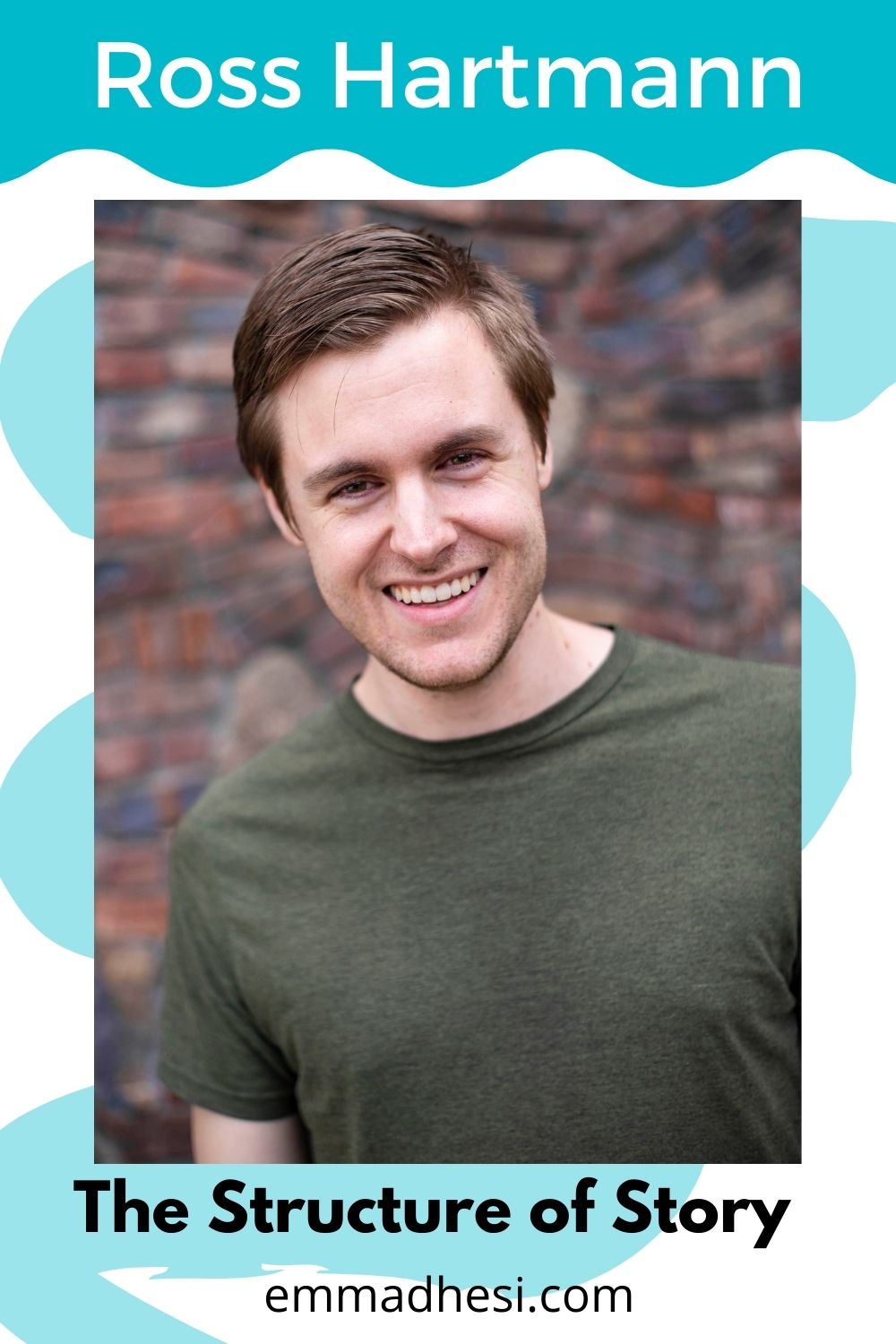
Ross Hartmann 11:47
Yes, well, essentially, the idea is that when we’re building a house, there are some things that we have to get right up front, right. So if we, if we lay down on a foundation that’s going to crack, you may not notice it until later in the building process, but it’s going to destroy everything. And so it’s really important at the beginning that we almost make success inevitable in the story.
And there are certain tools that we can use to make success inevitable, like character engines, for instance, where you have a character that creates their own story, energy. And one thing in the book that I address is this idea of giving a character a void or an emptiness. And sometimes that comes from pain from the past some ghost event that they’re trying to address you’re trying to hide, or trying to fill in other perhaps not so healthy ways.
Or a character who has an obsession, right, a character who wants something desperately. This is like all the 90s Disney movies, right? They all start with this song. Well, I wish I didn’t have to be part of this life, I wish I could have something more. Right. That’s the character with the obsession, they don’t necessarily have a trauma in their past.
But that’s an example of a story engine, a character engine and it’s an example of building a foundation where your story is going to, I won’t say right itself, but it’s going to provide you with endless material. Because anytime you don’t know what to do, you just have you just threaten the character’s obsession, or, or you take it away, or you offer an opportunity.
And you can always generate more energy. So the house metaphor is start with the really, really foundational important stuff and make the rest inevitable. And so I do start with starting a story from either plotting from theme from a story world, or from a character because not all stories start the same, right? Especially when with ideas, we can start from any one of those areas.
And we can build it out depending on where we start from. And so once you have those core ideas, I go through vetting the idea, and then breaking it down into beats if you’re so inclined to do that. And then finally, once we have that foundation, we go into writing the actual scenes, which of course is where the story actually gets onto the page and comes to life.
The rest is, you know, effectively theoretical until it actually becomes a scene but it’s good to know so you can get those scenes hammered out. So yeah, the this the house idea is just to make it so that the story becomes inevitable and has a sturdy foundation.
Emma Dhesi 14:38
It’s great. It’s great. I’m in that foundation section you do you use the word plotting, plotting from character plotting from theme just for the discovery writers out there is it do you literally mean that you encourage plotting or do you feel that the way you structure your story is equally acceptable to discovery writers as well.
Ross Hartmann 15:03
There is such a great question. So I’ll say that for discovery writers, the thing that I like to do is to not plot the beats, obviously, but rather to create engine story engines that make the story unfold naturally, in a way that comes to a conclusion naturally. So in other words, one of the tools is dramatic tension, right?
And with dramatic tension if we create a concrete goal, and we create one or more antagonistic forces, that structurally opposed to the protagonist, and we add some urgency or ticking clock, like, what’s the reason that the protagonist has to do this now, rather than later? Why can’t they just walk away? And then put something of deep value on the line stakes?
And then give the character a plan? How do they actually intend to accomplish that goal? And if you set up those elements, then you make the plot inevitable, right? And you don’t have to know exactly how things are gonna work. You don’t have to know the beats of every bit. But you just ask at any point in time, okay, my character has this problem or this goal that they’re pursuing.
And they have this plan. So let’s have them pursue that plan. And then you just write them pursuing the plan. And then well, they have an opponent, right. So something is unexpected is going to happen. Okay, well, now they have to revise their plan. And something in the story I talked about is called the disruption cycle where a character pursues their plan, but something unexpected happens.
Sometimes it’s an opportunity. It’s a problem. It’s a revelation. But no matter what, it forces the character to address that disruption, sometimes also known as a turning point. Yeah, something like that. And the character then has to address it, they enter a reaction cycle, also known as sequels and interludes, and then from there, they form a new plan and take action.
So for discovery writers, it’s important to make sure that you have these foundational tools and engines, not so much that you know, the exact beats, but so that you make the beats naturally inevitable. It’s kind of like you plant a seed that will make the plant inevitable, right? Yeah. And you don’t have to know the whole growing process, but it will work.
Emma Dhesi 17:33
Yeah, yeah. I think sort of similar to I just because I’m a discovery writer, and I tried to just to give myself a few signposts. So as long as I know where I’m starting, and I’ve got an idea roughly where the middle of what’s going to happen in the middle, and then I cover an idea of what I want the end to be, then that gives me just enough to keep me going in the right direction.
Enough of an engine to keep me ticking along. And we see what happens as I go along. So quick breaks down, but sometimes it keeps going, and I get to my destination. So I that’s I like that I like that idea of the engine. Um, another interesting thing that you talk about in the book, which I love, I love this idea is that you talk about story patterns. And, and so how might we decide?
Which one is the story pattern, first of all, and then how might we decide which pattern is right for the story that we’re telling
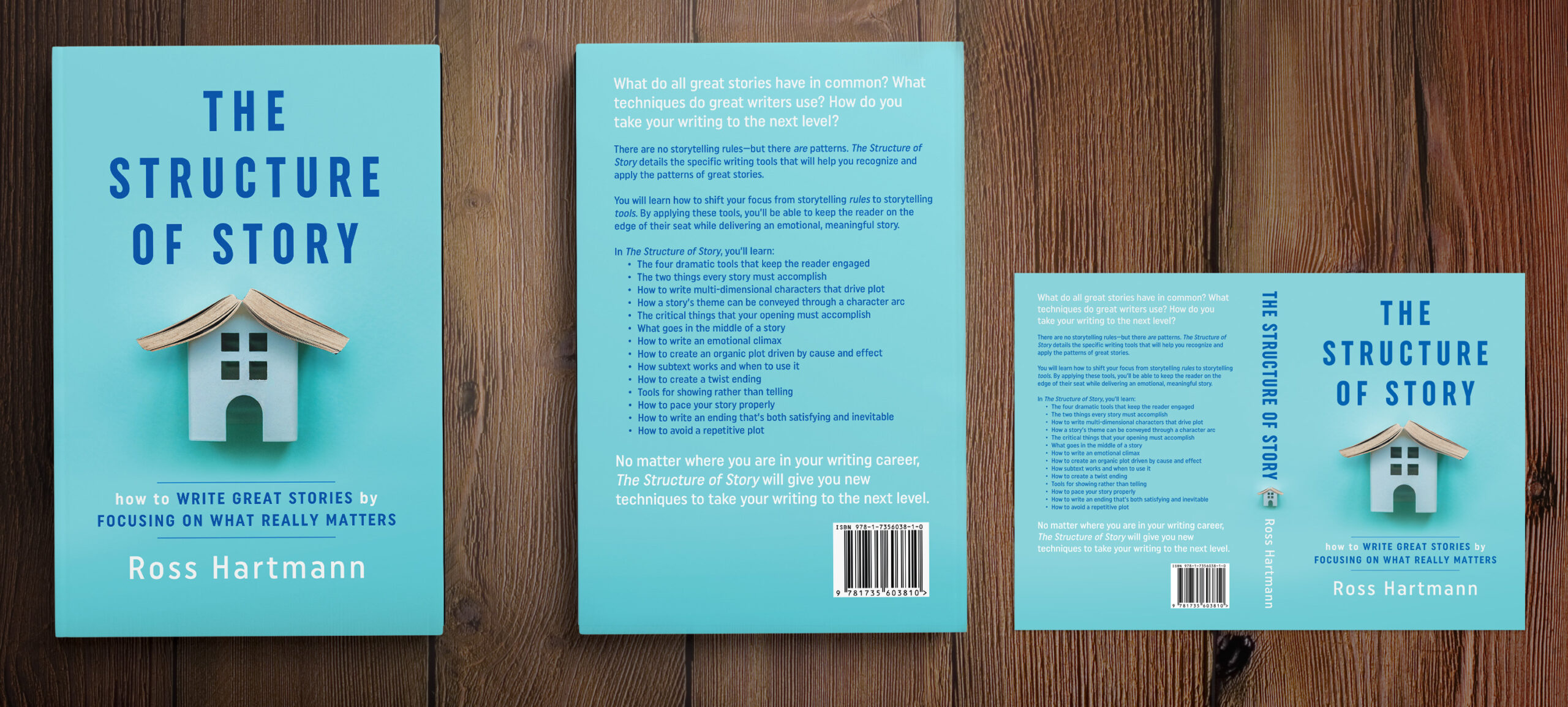
The Structure of Story with Ross Hartmann
Ross Hartmann 18:32
Such a great question. And this kind of goes into the idea of beats, which maybe we can touch on more in a bit. But yeah, with story patterns, it does depend on their patterns everywhere in stories, right. And, you know, the hero’s journey, of course, is probably the most well known. And there are beats for that pattern beats that make up the different patterns.
And it sounds kind of confusing, but it’s really all it means is just the stuff that needs to happen in order to meet the pattern. Right. So if you want to tell a Cinderella story, there’s certain things that need to happen in order for it to be a Cinderella story. And likewise, if you want a rags to riches, there are certain things that need to happen.
And there are different types of character arcs too. So what I like to do is kind of like yourself, have those key moments that are known, you don’t necessarily have to outline every scene, but you know, okay, the protagonist is going to start with this moral weakness. They’ve had some trauma in their past. And that comes out in defense mechanisms, and it’s negatively harming their relationships.
Now, I know by the end of the story, I want them to learn this lesson. I want them to be able to address their past to know that it was real, but it’s not their fault. And that they can have healthy relationships by learning this, this particular lesson, right? And so now throughout the story, I have to have confront their past essentially, and have them learn from it, whether that’s in the form of another character, like an influence character.
You know, a therapist, that’s a very common archetype that helps protagonists change. But all of this is a positive character arc. And that’s one type of pattern. And of course, there are negative character arcs. There’s the corruption arc, there’s the disillusionment arc, in a pot in a sort of positive character arc, there’s the redemption arc, right? You start with a villain, and they work on redeeming themselves throughout.
But these are all story patterns that have different beats, or different things that need to happen in order for us to satisfy that pattern. And again, like like all the tools, patterns, have different effects on the audience. So some readers love corruption arcs. And that’s that there’s a certain effect and a certain feeling you get from a corruption arc and from watching, Breaking Bad, or the Godfather or the story of Darth Vader, right?
You get a certain feeling from it. And it’s different, then, you know, Woody from Toy Story or Barla from Finding Nemo? And that’s perfectly fine. But it’s important to know, what emotion we want to convey, and what kind of pattern would best help convey that emotion?
Emma Dhesi 21:22
Mm hmm. Yes, like that. And they’ve mentioned that a couple of times. And this is quite a selfish question, because it’s something I’ve never been 100%. Sure about. So I’d love for you to answer it for me, because we hear a lot about beats. And that you, some people really love to plot down to the beats and other others don’t.
But could you tell me a little bit more about what a beat is? And I think you have kind of answered the second part of my question. You know, once a writer is decided on the pattern that they want to use, are there certain beats that they use within that pattern, which I think you’ve kind of answered, the beat sheet is, is a term that we’ve heard of? And so what what Yeah, what is it? What is a beat?
Because Is it a scene? Or is it smaller than a scene? Or is it a compilation of a few scenes?
Ross Hartmann 22:19
Fantastic question, because this is something that always tripped me up. And it’s… No, not at all. And it’s one criteria that I have with the reading community, is that the nomenclature is just all over the place, right? Like different people use different terms to mean different things. And it’s how are we ever supposed to come to the same learning, learning just makes it so much more difficult when you approach it that way?
So, okay, a beat is when something happens. That’s it. So now, the reason why it’s confusing, is because we use the word beat to mean different things. First of all, I’m acting a beat is like, a moment, like you take a beat, take a pause, take a breath. But we also use beats to mean, we use a beat in dialogue, right? Where the characters are going beat by beat through the dialogue.
And so one character might be rejecting another. And then that’s one beat. And then another character is begging the other. And that’s one beat. And then this character stonewalling. And then this character is bargaining. And then this character is walking away. And then this character is pleading, right. And that’s beat, beat, beat, beat beat.
And in that sense, a beat is just an action, or it’s a strategy in dialog to get what one wants. Now, the other reason this is confusing is because we use the word beat not just on the scene level, not just with dialogue, we use it broadly in a story, right? When we’re structuring a story, the beat sheet, and that just means something happens.
So and you know, the, it’s implied that it’s something significant that happens. But significance is relative, when you’re talking about as the scene level, something significant within the scene is not necessarily so significant when we zoom out to the broader story. And that’s why beats beat just means something that’s relatively significant happening.
And so when you have the, the hero’s journey, or, you know, almost any story structure, you have the inciting incident, right, which is the thing that typically, people say it happens around the 10% mark, and it’s the thing that kicks off the events of the story. That’s a beat. But then you’ve also got the plot point one the lock in moment, I think some people call it the predicament.
It’s when the dramatic question is raised at about the 25%. mark the end of Act One, that’s a beat. The midpoint is a beat, the crisis moment the big turning points at the end of Act 275 somewhere that’s a beat. The self revelation is a beat, the climax is a beat. And a beat just means something that happens.
Emma Dhesi 25:08
Okay? It feels like it’s kind of like it. So either it can be dialogue, or it can be action. It can be one line, it can be a scene, but essentially, it feels like it’s an emotion that’s being conveyed that turns the story in one way or another.
Ross Hartmann 25:23
Yeah, that’s, I think that’s a great description of it. And, you know, we can, we can also look at it, if we’re just, let’s say that we’re heavy plotters, we’re heavy outliners, and we’re outlining Act One, well, there are going to be more beats in Act One than just the inciting incident and just the end of Act One. Because there are beats that get us to the inciting incident, there are setups that have to occur, there are things there’s the refusal of the call right in the hero’s journey.
And that happens after the inciting incident, but before they accept their journey, and that’s a beat. And so, it does depend on what level we’re looking at. This is one reason why it can sometimes be helpful not necessarily to think in terms of beats, I speak in terms of beats when I’m talking about story patterns, because that’s how we kind of define a character arc. A positive character arc is the character starts with this more weakness, we have to dramatize that, right, that’s a beat that something needs to happen.
Then at the midpoint, they come they learn some lesson, or they start to see how life could be if they change their ways, they start to see some moment of harmony with the theme or with their final change. That’s the midpoint, that’s a beat, the crisis moment where all is lost to beat, the self revelation is beat.
Alright, so that’s in the context of the character arc. But when I think of terms of plotting, I like to think in terms of disruptions. And disruptions are problems, opportunities, revelations. So the inciting incident, I don’t personally think of it as a beat, I think of it as a disruption. It’s something that occurs, that presents an opportunity, a problem, or revelation.
Same with the moment where the character solidifies the goal. Something has to happen. It’s a problem, an opportunity or revelation. It’s a disruption. It’s a turning point, turning point beat disruption.
They’re all the same word for kind of the same idea, something significant happens, like you said, that turns the story in a certain direction.
Emma Dhesi 27:31
That’s so helpful. Thank you. Of course. Certainly, as I continue along my own learning journey with writing I do. I’ve come across it that other different people, different teachers have their own terminology for what essentially is the same thing. I think James Scott bells, the doorways confused me for a long, long time until I realized, Oh, that’s an inciting incident.
That’s him that says moving into the into the kind of storyline now. Yeah. And so yes, I’m always learning. So thank you for sharing that with me.
Ross Hartmann 28:04
No, absolutely. It’s such a great question. And I think it’s also exacerbated by the fact that some writing teachers love metaphor a lot, right? So that that’s, you know, it’s when the fish jumps out of water.
And they just describe it all through metaphor, which is great for rent for getting in there the first time, but it’s hard for solidifying the ideas yeah.
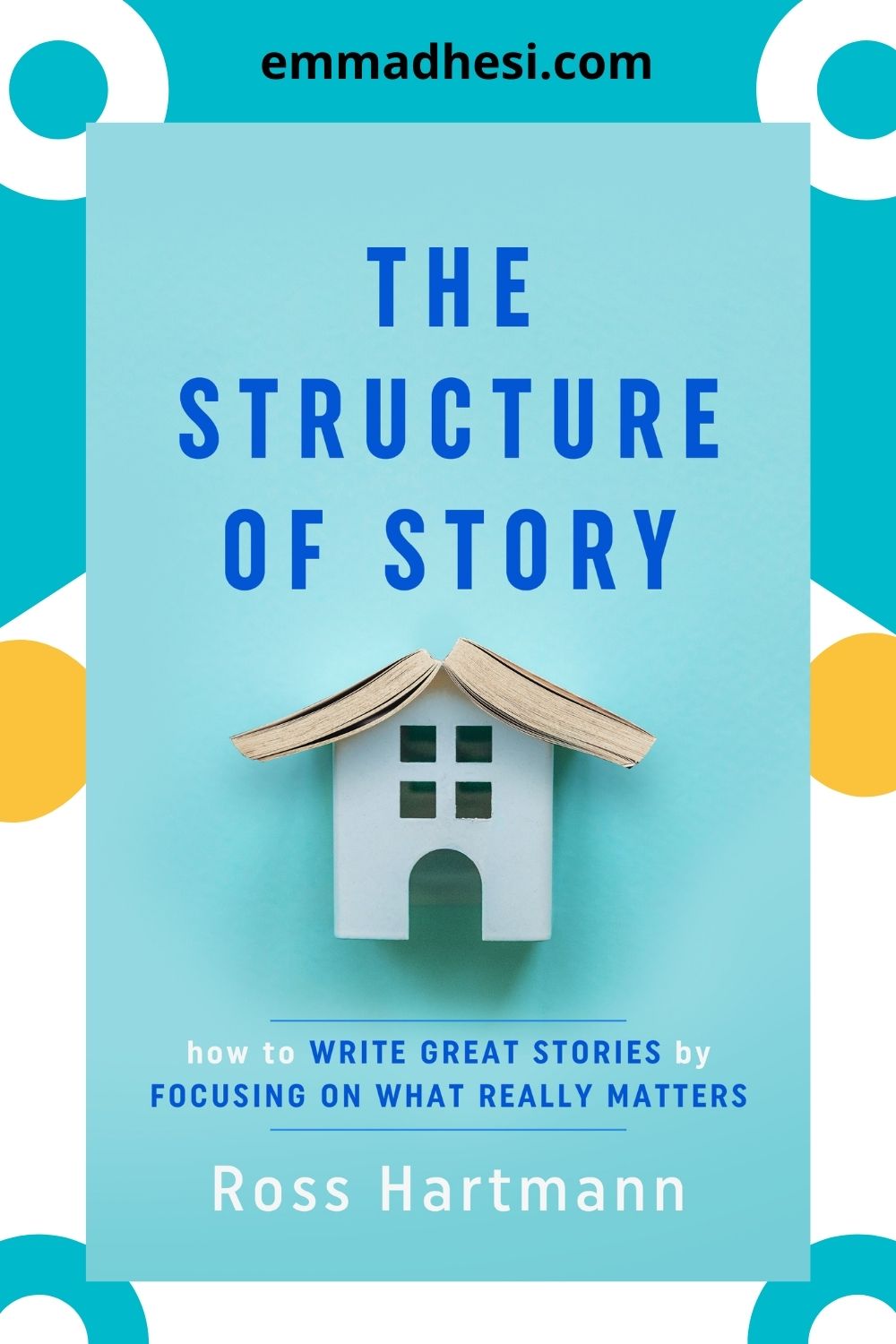
Emma Dhesi 28:26
And so, okay, we’ve got the beat. So Part Seven of the because about seeing writing, and so what for you and makes a good scene, what what are the kind of the crucial tools that we would need to incorporate within a scene to make it work and to help it keep moving a story forward or making sure it earns its place in the story?
Ross Hartmann 28:51
That is such a good question. And such a such a big question, too, because you know, the scene is where the story happens, right? And so anything that you’ve outlined in your, your beat sheet, or your your outline, or any sort of thing you’ve given to the character’s background, that’s not real, unless it comes out in a scene, right?
So what I like to start with is first asking, okay, what does the scene need to accomplish? Just in the same way we I asked that for stories, what does the story need to accomplish needs to be engaging and meaningful? What does the scene need to accomplish, and different scenes need to accomplish different things?
So I will start by saying that scene is another word we use broadly, that can mean a couple different things. And then there’s another way we use scene, which is more specific. And, and it doesn’t mean that other scene. So broadly speaking, a scene is some period of time and location which something happens, right.
But more specifically, a scene is contrasted with what’s called a sequel or an interlude when we’re talking about scene structure. And in that sense, a scene is when there’s a meaningful disruption. Or in other words, a turning point. Some people say, a crisis point, it’s when something happens, that turns a story in a new direction.
There’s a new problem, there’s a new opportunity, or there’s a new revelation. Now, that’s a scene proper. But those aren’t the only things that happen in a story, right? If you just had every scene, problem, problem, problem, problem, opportunity, opportunity that can make for a great, fast paced thriller, right.
But if you’re not writing that, and you want a bit of a slower pace, there are these moments in between where characters digest what just happened. They react emotionally, analytically, they weigh their options, they sit with those that are the closest relationships, they mourn, they celebrate, they’re frustrated, they’re confused.
Those are where the emotions come in. And those are not proper scenes. Because they don’t turn the story in a new direction. It’s really about digestion. And it’s about feeling the emotion that comes from the disruption that we saw before. And it’s really important part of the story. If you this was one of
Unfortunately, the complaints with the latest Star Wars is that it was just action, like just revelation, something terrible would happen. And the characters wouldn’t take half a second to think about what it meant or why it mattered. And so consequently, it can start to feel the disruptions or turning points can feel less significant.
So okay, so brought so their scenes in their sequels, there’s the disruption, and there’s the reaction. So we have to think about what does our scene need to accomplish? And then this is where dramatization comes into play. Right? So there’s a piece of information we want to convey. Let’s say we want to show that our character is selfish.
Well, the question then is, how do we show that? How do we put that on the page. And the scene is, of course, where we get this idea of show don’t tell. This is where we want to dramatize and not summarize, I will probably say that there are times where we do want to tell it does have its place. But showing is a good idea, too.
So when we are going through scenes, there’s a bunch of different tools that we can use. There’s clones, there’s comparisons, there’s objects, that’s a huge, huge thing. There’s moral dialogue, where characters are giving their opinions and their beliefs, in comparison is one of the biggest ones. But that’s all for conveying information, there was this story that I thought was a fantastic example of show don’t tell using comparison.
Alright, so there’s this husband and wife, excuse me, husband and wife on in an elevator and the husband and the wife both look like they hate each other. Because they do. And they just, they’re over it. And he doesn’t, he still has his hat on, where you know, let’s say it was back in the 20s or 30s, he should have taken his hat off in the elevator or something.
And then this, the elevator doors open. And this beautiful woman walks in, and the man perks up and smiles and takes off his hat. Okay, so that right there just tells you a few things about the guy. But it also tells you a few things about their relationship.
And that information can all be conveyed silently. You don’t need any dialogue to do that. And that’s over that’s dramatization. That scene work. It’s beautiful.
Emma Dhesi 33:40
Yeah, I just you describing that there. I immediately had this image in my head of a guy whose face lights up and the hat comes off and the wife next to…
Ross Hartmann 33:49
The wife scowls at him, right. Yeah. Exactly. Exactly.
Emma Dhesi 33:54
So that’s, that’s kind of use of an object did you say, of how we can dramatize
Ross Hartmann 33:58
Yes, and you can give meaning to objects, right. And then you can bring those objects back in later scenes. So now the, the hat has some significance. So if you brought it back in another scene, we would be reminded of that previous moment. And so now it has some meaning when tied to their relationship and, and how he feels about her and vice versa. So it’s objects are a brilliant thing to do with scenes as well.
Emma Dhesi 34:26
Can you give us an example of another not an object you met? You mentioned a few things there. And I wonder if you could give us another example?

Ross Hartmann 34:34
Yeah. So one is reaction, which I really love. And this is used great in the sounds of the lambs, I will say actually, comparison is another great tool and that was used in that last example I gave where we compared how he treats her versus how he treats this other woman and so we just showed a comparison with how a character acts in one situation versus a similar situation and that tells us what they value but reaction is huge.
So in The Silence of the Lambs, Clarice is going to meet Hannibal Lecter for the first time. And she’s warned over and over. This guy is dangerous, right? We, everybody tells us Don’t let him get inside your head, he’s going to destroy you basically, right? incredibly dangerous. And so we haven’t seen them. We don’t know anything.
But how the characters react is a way for us to understand something about this character nd then when she’s walking down the hallway, she sees all sorts of terrible prisoners in the in the jail. And they’re just one after the other is more terrible than the last and just saying crude things and just acting immorally.
And we get to, we finally get to him, and he’s just standing there. And he’s not saying anything. But we know he’s at the end of the hallway. That’s comparison to he is worse than all these other criminals that we thought were so bad. So we’re making use of both comparison in there and reaction. There’s so many great tools for conveying information. And you know, like how they treat them, too.
They don’t just walk him out of his cell, they put him in a straitjacket with a mask on. And they tie into a dolly. And so he doesn’t even get to walk. So that’s all conveying This is a dangerous guy. We don’t actually even have to see him do anything. It’s just all through reaction.
Emma Dhesi 36:27
Mm hmm. Oh, it’s a long time since I’ve watched that movie. But now that you’re talking about that, I can picture it, I might have to go back and rewatch it. Such a great one. Yeah, he those examples. However, that’s that’s been wonderful. Thank you for talking me through through the structural story through the different parts, and particularly about the beats and the scenes. I’ve loved learning about that. Thank you so much.
Ross Hartmann 36:50
So fun. Thank you so much.
Emma Dhesi 36:52
So I know that the structure of story, that’s just one part of what you do, the book itself is just one part of what you do. And you also have a website called Kingo. And I have to admit, I’m intrigued by the name because it’s K II NGO, where did the name come from?
Ross Hartmann 37:10
Yeah, it’s it’s a couple of things. One is just the core idea comes from creative lingo. Like just the the nomenclature of creativity and, and, broadly speaking, creating stories, but the double AI is because the URL is available, and I really liked it. So…
Emma Dhesi 37:36
Fair enough
Ross Hartmann 37:38
To come up with a better reason. But I like it. Honestly. It’s kind of fun. Making smiley face on there somewhere.
Emma Dhesi 37:44
Yeah, no, it’s great. It’s great. And Kiingo creative, I think is the kind of the name of the website.
If you’ve been working on your novel for years (perhaps even decades) the maybe it's time to consider working with a coach.
If you have multiple versions of your novel and you don’t know which works best, are scared nobody will like your book and don't feel like a 'real' writer, then my guess is coaching is the right next step for you.
Find out more and sign up for your free Clarity Call here: https://emmadhesi.com/personal-coaching/
Ross Hartmann 37:50
So kiingo.com. Yeah.
Emma Dhesi 37:52
Yeah. Say that again? Sorry.
Ross Hartmann 37:54
Oh, kingo. calm. Exactly. And then kiingo Creative is the the handle I use on most social media. Exactly.
Emma Dhesi 38:01
So tell us about Kiingo What are what kind of the other things that you You do? Because I know you’ve got a course there’s podcast, but you’ve also kind of got other things in the mix as well?
Ross Hartmann 38:12
Yes. Okay. So broadly speaking, it’s just tools to help writers. So if you’re a writer, and you want to become a better writer, we’re here for you. So we do that in a couple different ways. There are daily tips that we release every day.
So it’s just a little bite sized tip if you want to improve your writing, but you don’t want to dive into this massive long thing you just want a little bit every morning to inspire you get those creative juices flowing. We have that at kiingo.com/tips.
But we also have it on Instagram, Twitter every day, a new writing tip. And then with, we’ve also got a course like you mentioned, and then the book, which is sort of the compilation of all our most of the writing tips and puts it in a cohesive journey for you. So you can learn everything from start to finish. And we’re currently working on writing software, actually.
So we’re working on something that’s going to help writers throughout the entire process. So right now, there are a lot of different tools for drafting, outlining, for revising, editing, and then for formatting and publishing, right, we’re going to try to make something that can be your full ecosystem where you go you’re able to plot an outline, draft review, you can send a link to your editor, whether they have the software or not and it can track the changes and they can see all that and then you know formatting like vellum and this is pretty ambitious. we’re nowhere near this yet, but this would be the idea and and make it so it’s really a one stop shop for a writer’s process.
And and that’s what we’re working on right now. The first thing that will come out is the word processor and it will have All sorts of fun tools, there’ll be a one time fee instead of a cloud, like recurring fee.
I know people don’t like the recurring fees. There’s sinking across devices, all the different devices and version history and everything. So it should be cool.
Emma Dhesi 40:13
I should be cool. Yeah, that sounds fun. That sounds ideal. Because Yeah, it’s frustrating, not frustrating. But there’s so there is so much out there that you have to do this software for that this software from you have it all in one place where you know, you can just do the whole process and one thing, and then send it off to be you know, if you’re doing ebooks and send it off and be uploaded. Perfect. I love the idea that you can send it to your editor and do the track changes.
That sounds great as well. And wonderful. Do you yet know when the first phase is going to be released?
Support The Show
If you enjoy the Turning Readers Into Writers podcast, you can now support my time in producing the show with Patreon.
If you find that the podcast adds value and you’d like to help support the show, please consider supporting me on Patreon for $3.00 per month and you’ll get bonus podcast content, as well as a personalised thank you from me, and a shout out on the show.
Ross Hartmann 40:46
A great question. So for the for the actual writing processor, we’re targeting an alpha release in May, May of 2021, in case you’re listening to this in the past, and then a couple months after we’ll do a beta. And then what I also want to do is make sure that there’s a mobile app available too, because I know some people like to write on the go.
So yeah, that’s that’s the target right now, you know, there’s going to be a lot of missing features in this in the beginning, but I would love just to get everybody’s feedback and know what is in your dream writing software. What do you want to see? And hopefully we can integrate that.
Emma Dhesi 41:26
So if anybody listening does have you know, if they do have an idea about what they would like to see you do you want people to get in touch with you and let you know?
Ross Hartmann 41:26
Yeah, I think you know, Instagram is probably the fastest but kiingo.com/contact. I’ll also reply to that probably within 24 hours. So kiingo.com is where all the latest stuff happens if you want all the news and everything K II N G O get those two eyes in there. Please yes.
Emma Dhesi 41:35
What’s the best way for them to do that?
Ross Hartmann 41:38
They can contact us on Kiingo Just go to Kiingo.com k ii n g o .com/contact. You can also contact us through you know, Instagram can go creative K ii NGO, Facebook, Twitter, they’re all the same handle.
Emma Dhesi 41:53
Cool. I shall link to those in the show notes. And are you looking for when the beta comes around? Are you have you already got people in place? Are you looking for people to beta test it for you?
Ross Hartmann 42:03
I’ve got a couple in place, but I am open if you think that you are a good fit for this and you think he could provide some some great feedback, then I would definitely be open to it. Yeah.
Emma Dhesi 42:13
Okay, cool. Brilliant. So you that’s what you’re working on at the moment. And and yeah, so if people want to make contact with you, you’ve mentioned a few places there, but where’s the best place to get in contact with you? Lovely. Oh, well. It’s been a pleasure speaking to you. I’ve really enjoyed our conversation today. Thank you so much for your time.
Ross Hartmann 42:51
You too Emma, this was just fantastic. Thank you for having me on. Really appreciate it. Your website is such a resource. And I’m excited for what you’re doing in the future. Helping writers so much. So thank you. Thank you again.
Emma Dhesi 43:03
Oh, thank you. Well, that’s it for this week. I hope you find it useful. If you’re interested in becoming a part of a safe and friendly community of like minded writers who want to write their first novel, go to my Facebook group at emmadhesi.com/turning readers into writers. I can’t wait to see you in there. You can find the show notes for this episode and all the others at emmadhesi.com/podcast. Thanks again for joining me and I can’t wait to get to know you better soon.
If this interview with Ross Hartmann was useful, you’ll love:
Shortcuts for Writers
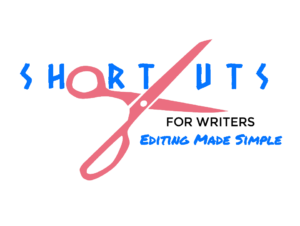
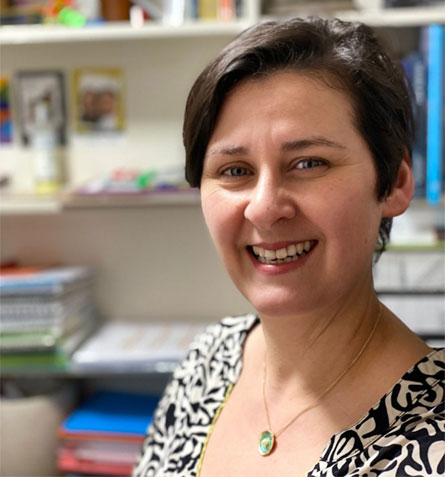
Emma Dhesi
Emma writes women’s fiction. She began writing seriously while a stay at home mum with 3 pre-school children.
By changing her mindset, being consistent and developing confidence, Emma has gone from having a collection of handwritten notes to a fully written, edited and published novel.
Having experienced first-hand how writing changes lives, Emma now helps beginner writers find the time and confidence to write their first novel.


